Hey, everyone. "Moriarty" here with some Rumblings From The Lab.
Nice one, Beaks. Dykstra’s a bona-fide legend, and the fact that he’s still working to push the envelope each year is exciting. This is a heckuva good read by a guy who has proven to be an invaluable resource since his relocation to LA last year, so dig in:
As a kid, I used to while away the hours leafing through any number of movie books that battled for space on my bedroom’s bookshelf with baseball almanacs, comic books and Mack Bolan novels. The majority of these volumes were dedicated primarily to genre films – horror, sci-fi and fantasy – and their cultural impact, but one in particular sought to give a layman’s nuts-and-bolts understanding into how these films, so often reliant on spectacular visual effects, are made. It was INDUSTRIAL LIGHT & MAGIC: THE ART OF SPECIAL EFFECTS, by Thomas G. Smith, a title that is no doubt very familiar to many of you who read the site. It’s an oversized, glossily illustrated tome that served as my primer for the Special Effects industry which, at that point, was really occupied solely by the book’s titular subject.
Of all the brilliant, groundbreaking artists profiled in the Smith’s book – Richard Edlund, Joe Johnston, Dennis Muren and Phil Tippett to name a few – the name that always stood out for me was John Dykstra. Charged by George Lucas with hiring the talent and developing the technology that would allow ILM to, over the next twenty years, blaze a blindingly bright trail through film history, Dykstra, according to the book’s brief bio, seemed the Zen-like center of the STAR WARS production unit. Equal parts innovator, facilitator and ameliorator, Dykstra was responsible for nothing less than capturing images the likes of which filmgoers had never seen. And if that meant designing and constructing new equipment (i.e. the Dykstraflex camera, a pioneering piece of hardware in the field of motion control for which he won a special Scientific and Engineering Oscar the same year his f/x team won their Oscar for the utilization of it on STAR WARS) to meet these goals, so be it.
But when the upstart f/x outfit, at the behest of Lucas, relocated to Northern California, Dykstra stayed behind to start his own company, Apogee, which went on to provide memorable images for the cult sci-fi television melodrama, BATTLESTAR GALACTICA, and such films as STAR TREK: THE MOTION PICTURE, FIREFOX and Tobe Hooper’s Cannon Films combo, LIFEFORCE and INVADERS FROM MARS. Post-Apogee, Dykstra served as the visual effects supervisor on the Schumacher BATMAN entries - easy now, guys, he didn't write them - before beginning his long term collaboration with Sony Pictures Imageworks, where he garnered an Academy Award nomination right out of the gate with his celebrated work on the first STUART LITTLE. Most intriguing about this nomination, aside from it being John’s first in twenty years, was how John suddenly found himself pitted against the ILM crew – including old colleague Dennis Muren, who he brought aboard the company way back in 1975 – and their work on STAR WARS EPISODE I: THE PHANTOM MENACE; however, any awkwardness was effectively dashed when THE MATRIX ran away with every technical Oscar available. But considering Imageworks rising profile in the visual effects community, it was clearly only a matter of time before John once again went head-to-head against his old company.
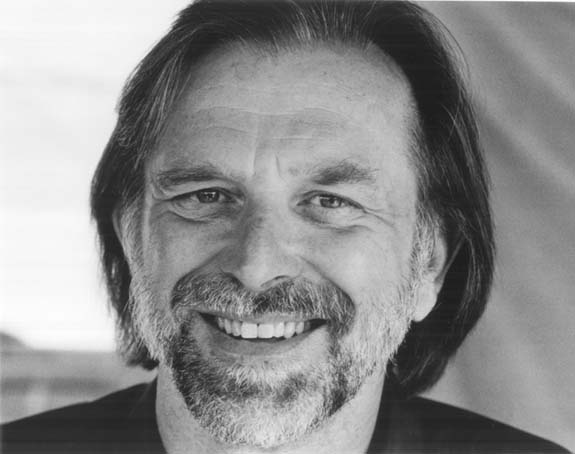
This brings us to the reason I’m hanging out in Culver City, CA, looking to steal thirty minutes out of John Dykstra’s busy schedule for AICN. That day has arrived; along with Scott Stokdyk, Anthony LaMolinara and John Frazier, Dykstra has received a Best Visual Effects nomination for SPIDER-MAN, vying for the coveted award against THE LORD OF THE RINGS: THE TWO TOWERS and STAR WARS EPISODE II: ATTACK OF THE CLONES, both of which boast f/x artists who, at one time, worked for John. But while this is terribly pertinent in my mind, it appears to me that John has plenty of other projects to keep him occupied, most notably a little film called THE AMAZING SPIDER MAN. In fact, a production meeting for this hotly anticipated sequel is breaking up as I follow John’s athletic 6’4” frame into his office. As we sit down to begin our conversation, John ponders the notion of competing agains his legacy very diplomatically.
Slouching back into a black leather couch, John confesses, “The part of this business that I enjoy is the invention. So, the idea that we are in a league, a comparable league to an organization that is known worldwide for its inventiveness and for its cutting edge technology is exactly where we want to be. We want to be right there… step-for-step, stride-for-stride with the people who are doing the kinds of images that get this kind of recognition. It’s terrific to be there.”
It is, in other words, a friendly rivalry, since, as John puts it, “It’s too small a community to have hostility. It’s very much a friendly rivalry. The thing about films is that they are so collaborative. Each movie is a composite. It’s never, with the exception of our film, it’s rare for a movie to end up being solely one person’s effort.” As for what sets his film apart from the work of his former colleagues, John adds, “The thing that’s interesting and exciting to me is the difference in the personalities of the films – the different thrusts of the films. And they are significantly different. I think that the SPIDER-MAN movie is much more a story about this character and much less a story about a world, and I think that’s the difference between (our) movie and STAR WARS *and* THE LORD OF THE RINGS.”
From there, we backtracked a little to the formation of ILM. I was curious to know if, as he brought together this remarkably talented group of technicians, whether or not he had any inkling that their efforts were about to change the way films are made. John humbly allows that, “I’d like to think that I was prescient, but I wasn’t. I was actually a very enthusiastic technician, artist, filmmaker – whatever you want to call it – and I saw this as an opportunity to apply a unique talent that I had in a way that allowed me to participate in mainstream filmmaking. So, really, it was less about having some foreknowledge of the brilliance of this story, and was more about exploring every possible avenue of filmmaking in any possible way you can. You know what I mean? It’s one of those deals where you set out to become an architect, and you end up, in order to get into architecture, you end up… making hot tubs, but in the process of making hot tubs, you come up with some device which allows you to turn water into hydrogen. So, it’s that kind of…. free association employment. And I think that the people that came to work on the first STAR WARS were an extension of that same personal approach on my part. I worked for Doug Trumbull, and I liked the idea of the collaboration being based on friendship, as well as an understanding of mutual talent. And I think that what that combined was the business of communication. And by doing so I think that the… STAR WARS product reflected the camaraderie that the people who were making the film shared. And I think that that is very much the same case with SPIDER-MAN.”
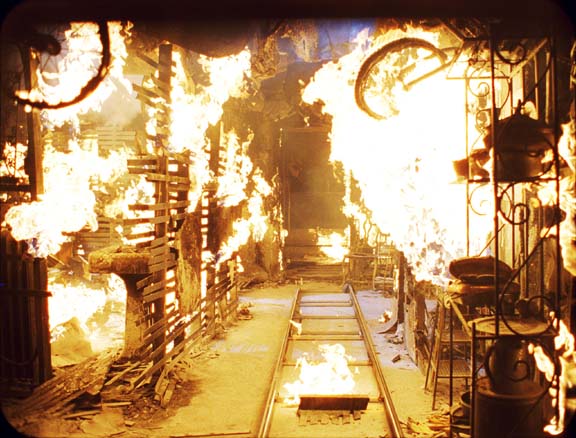
I quickly discovered that, while I would never in this lifetime tire of talking STAR WARS with one of the film’s integral visionaries, John, ever the forward-thinking innovator, was far more interested in SPIDER-MAN, so I seized upon this opportunity to discuss the ways in which motion control technology has evolved since its inception in the 1970’s. Buckle your seat belts.
“That’s a strange question because it turns out that motion control is pretty much what it always was. It’s a more sophisticated version. It’s faster and more capable, but the basic components of it are the same as they always were, which is the ability to control a camera’s position in space relative to a frame. Because you vary the time which varies the frame rate, so by varying the frame rate you can vary the speed of the system, but the camera is always in the same place in each frame. That’s the idea. And that part’s the same as it ever was, I think. The thing that’s different, and the thing I think that is truly the change that’s occurred, is, because we can do pre-visualization in the computer, we can compose and choreograph the scene using a surrogate of the environment, and because that information interprets now into motion control, which is fast enough to work real time – which is a big change – and it is flexible enough and precise enough to be simulated in the computer – so, what you see on the computer screen is something that you actually get to achieve in the real space – and because we can bring and sets and environments into the computer, we get to think through shots a lot more than we used to. So, many times, in the past using motion control, you’d show up on the day and you’d conceive the shot while you’re there. Now, because we have the sets and the ability to do pre-visualization, the more complex shots, specifically, we get to conceive and analyze, and try different variations. You know, if you tried six different camera moves, a complex set of camera moves, on a live-action set, it’d take all day. Six different camera moves done in pre-visualization may take all day, but it’s only one guy. And the creatives, then, can come and look at it, and say, “Hey, that’s the one we want!” So, you show up on the day, you’re not fiddling around trying different things. You get to put more of the money on the screen, which I think is the real focus of our effort.
“And the inverse of that, the odd thing about that, and the other thing about motion control that’s changed is that motion control is now user friendly, meaning that, should you get on stage and say, ‘You know, this shot needs to be motion control,’ you actually can set up motion control and very quickly record a move in a fraction of the time that it would take to use that kind of system back in the days of STAR WARS. People used to groan when they saw motion control come on the stage.
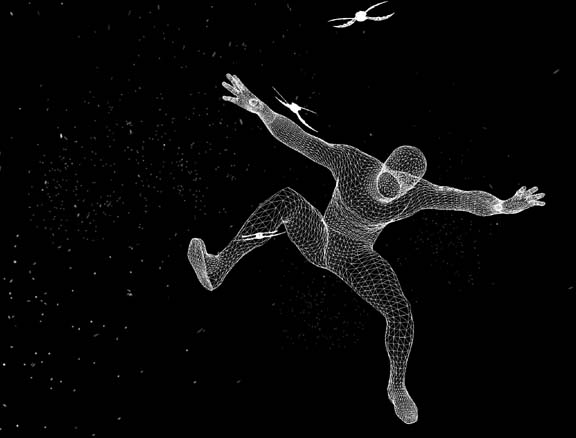
“The thing I think that’s critical in SPIDER-MAN, in terms of using motion control, was that the camera became part of the personality of the character. Very specifically, in “spider sense”, where you were experiencing directly his sensory input, and how he was isolating things out of the environment and defining them. And I think that the other camera move that is an offshoot of motion control is the cameraman that we created for Spider-Man.”
I think this is where John hits upon the crucial visual invention that made SPIDER-MAN the most vastly appealing blockbuster of last year. By creating a “character” – the cameraman – that follows Spidey as he swings through Manhattan, John and his Imageworks team devised a surrogate through whom the audience could feel what it’s like to be the web-head. John refers to this cameraman as “the photographer that works for a competition skydiver”. Toward that end, you can see where they have, rather ingeniously, added some digital buffeting of the camera to enhance this sense of moving at a high velocity through the skyscraper-ed corridors of the city. But that technical verisimilitude is only half of the achievement; the other half was the attention to character. Even John grows a little animated as he explains, “I think the unique characteristic of our cameraman is that he actually improved over the course of the film. And that was a conscious decision. It wasn’t just because we started out at one end and got better because many of the shots that are at the end of the movie were done at the beginning. So, we had the capability of making the performance fluid and graceful, but we chose to give the camera operation sort of the same kind of characteristics of personality, or character arc, that Spider-Man went through himself; he started out awkward, but became facile. It was the same component of personality development as reflected in camera motion, and that’s something again where motion control and the ability to pre-visualize helped us significantly.”
John is also quite proud of how they met the challenge of defining Spider-Man’s character through pure movement. “I know a lot of people say, ‘Well, it’s easy. He doesn’t have a face!’” John laughs a little, and continues, “Well, guess what, the most critical component of an actor in a convention performance is their face. You take that away from them, then the actor *and* the director are stymied because, suddenly, everything has to be done with body language.” Nowhere is this more apparent than in the film’s final sequence – “The Last Swing” – where we watch a newly confident Peter Parker become the Spider-Man we know and love from the comics. It’s this extended shot – twenty nine seconds of screen time, which took six months to complete – that sent so many audiences out on a high note, ready for the sequel, or possibly a repeat viewing.
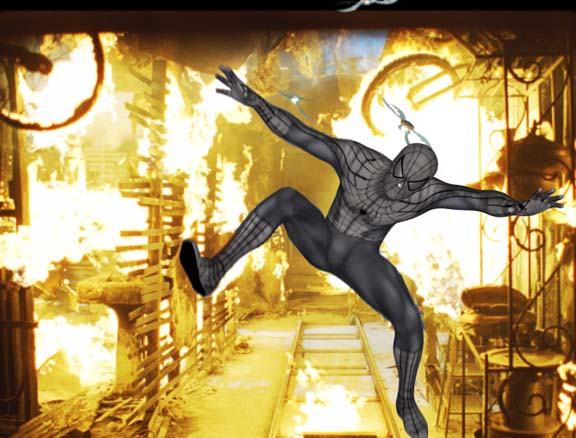
Pleased as he is with their achievement on SPIDER-MAN, and the subsequent vindication from the Academy, I ask John if he has ever considered returning to improve these images as his erstwhile collaborator, George Lucas, has so famously (or infamously, depending on your own personal assessment), done with the original STAR WARS trilogy.
“No. I don’t think so. It’s kind of an odd thing because I know George went back and adjusted the first STAR WARS, and when I saw the adjustment to the movie, I went, ‘Well, I understand why he did it. I’m not sure that it changed the movie at all.’ In fact, in an odd way, the thing that he did which was successful was that he kept the changes that he made to the movie in the spirit of the original movie. The quality of the opticals were not vastly improved over the quality of the opticals that existed in the first film. He didn’t go back and put… year 2000 imagery into a film from 1977, which wouldn’t have worked. And I give him credit for that.
“Now, you ask about going back to do things in SPIDER-MAN. I don’t think so. I think that the film stands in its own right. There’s an odd thing that’s said, that works of art are never completed, they’re abandoned. And I think that ‘abandon’ is truly what you do. You move on. You learn from that experience, and you go into the next opportunity with a new piece of vocabulary. Our vocabulary, our dictionary, now has pages full of information that we gained from the making of the first film. And the ingenuity that went into the making of that first film is no longer ingenuity; it’s a known commodity. So, now, we take our ingenuity and our experience and move into the next movie realizing that the last thing that we want to do is to simply make a better version of that movie. What we have to do is make a *different* movie. That’s the only way that SPIDER-MAN 2 will be a success compared to SPIDER-MAN 1.”
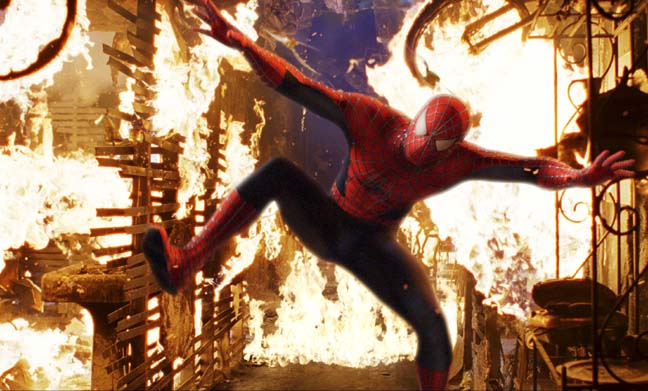
Finally, our conversation turned to the use of motion capture vis-Ã -vis full (absent the actor) CG character animation, both of which were employed on SPIDER-MAN. John explains, “We used a lot of motion capture for people who did conventional things, people walking and talking, which is really hard stuff to animate because of the subtle cues – we are so intimate with a human being, and when you watch a human being move you know their mental state. You can watch a guy across a room, sitting at a table, drinking a cup of coffee, and guess as to whether he’s unhappy or happy without hearing a word or even seeing their face. I think that the key to our survival is the ability to read other people’s language, be it directed at you, or not directed at you. This is what made this character so challenging to do. It was to create a surrogate for reality which we know intimately well, and, then, the second challenge was to, indistinguishable from the real character, take that character which we now recognize as a human, and make it do things that humans can’t do.
Summing up his philosophy, John states, “Motion capture for things that are conventional that real people can do; animation for things that extend beyond the realm of real things. And they both have their own strengths and weaknesses, and, fortunately for us, they can be used on the same movie.”
Creatively, John Dykstra appears to have found in Imageworks (and, specifically, Sam Raimi) the perfect collaborator through whom he can be, along with the rest of his Imageworks team, a true contributor to the finished film by, as John puts it, “expanding the normal areas of our contribution”. It’s the kind of freedom John has been pursuing throughout his career, which may have, at times, lent it a quixotic tincture. But there is little denying the confidence and contentment John now exudes. Given the ever-expanding tools at his disposal, and their rapidly growing sophistication, it’ll be a blast watching him push the envelope he personally sealed nearly thirty years ago.
Faithfully submitted,
